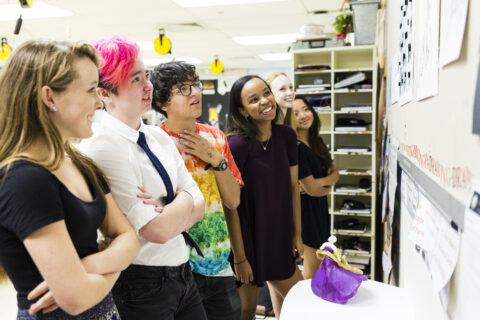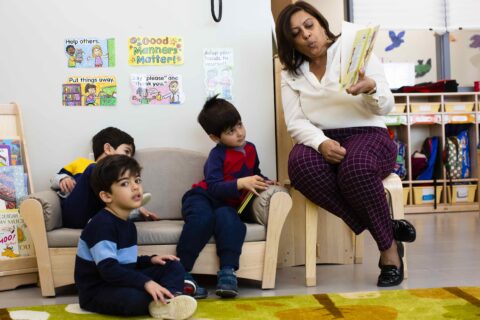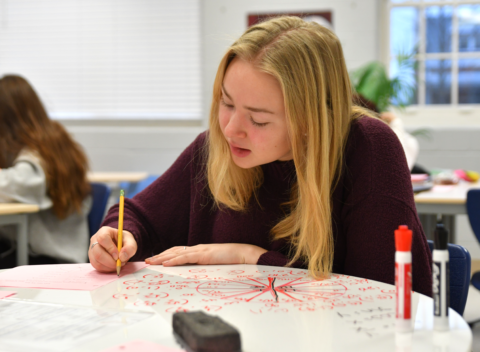By Dr. Kenneth Waters
Editor’s Note: This article was originally published in Volume 4 of “Think Differently and Deeply” (2020).
As a former college professor, there were several questions I would hear from my students, be they undergraduate, graduate or postgraduate students: “How many pages should this paper be?” or “What’s the word count for this paper?” Despite my internal disdain for these questions, I would calmly respond with the same answer: “Your paper should be long enough to provide evidence that you understand the topic you are producing.” Seeing that students were uneasy with this response as they realized they would have to use their critical thinking and active reading skills and bring their own perspective to achieve success on my assigned papers provided me with a sense of enjoyment and justification that I am in the right profession.
The root of my excitement relates to the notion that a number of today’s learners are conditioned to follow a rubric, which is both beneficial and problematic. The majority of my students prefer a rubric, primarily because this mechanism creates a more objective method of scoring and because they are clear on how they will be evaluated. (1) My issue with relying on a rubric is that I believe students can be less inclined to think critically or holistically about the purpose of the assignment – thereby losing the opportunity to explore their learning at the sake of only obtaining a passing grade. When this is common practice, I posit that students’ voices, literacy, and perspectives can be muted as they simply navigate toward a grade, consequently impacting their development, self-confidence, and advancement in life.
Classes need to have student voice designed into them. Providing students with a space to voice their ideas “create[s] programs and policies that are more effective at meeting the school’s own goals for supporting young people in their healthy development.” (2) And while some of the places where student voice might be either incorporated or shut out are obvious, some, such as how we create rubrics, are perhaps not.
Below are some strategies I employ in my 11th grade English classes at St. Andrew’s to develop, support, and advance students’ voices on a consistent basis:
- Having students respond to statements, quotes, or current issues both orally and in writing
- Engaging students in discussion about the learned material and its applicability to their everyday life and society at-large, as opposed to simply perusing through the curriculum
- Avoiding closed-ended questions and posing open-ended questions, while also asking students to explain their responses in detail. I also ask their peers to provide their perspectives on the given response.
- Encouraging students to omit the word “it” from their writing and to explain what “it” is in relation to what they are trying to highlight; and
- Not allowing students to regurgitate the material we are learning, but rather advocating for them to respond to prompts in their own words
With anything new, there’s always apprehension and a lack of confidence in one’s ability to perform at the expected level, which was all present as I began using these strategies with my St. Andrew’s students. Because we are a school that favors a growth mindset, coupled with me being unapologetic about having high expectations for my learners, I spent the first few weeks of the school year assuring my students that they were going to be okay and to trust the academic journey I was charging them with. Easier said than done, right?
“I just don’t understand,” argued a few students. “I’m just not used to this way of learning,” mentioned another 11th grader, whose comment was echoed by a myriad of their contemporaries. All valid responses, but in staying true to the academic journey we were traveling, I constantly reminded each student who openly or non-verbally communicated their anxiety about how they will be evaluated in my class that the benefit in practicing these strategies would help them progress academically, socially, and professionally. These words of confirmation subsided some of their fears, which is an accomplishment considering the level of angst a number of my students had upon adapting to my pedagogy.
Although not said to my students, the approach I instituted in my classroom aligned with 9 out of the 15 power strategies for teachers outlined in the CTTL’s Mind, Brain, and Education (MBE) Research Informed Strategies Placemat. Specifically, these include and are explained as follows:
- Moving beyond lecture, by engaging students and encouraging active learning during the times I am introducing material to the class. This is done by posing clarifying questions, having students think-pair-share, displaying images and videos to gauge students’ perspective, and facilitating open discussions where all participate.
- Connecting class to students’ lives, where I focus on teaching students applicable skills and knowledge that can be used in their everyday life and beyond.
- Including choice and play, by allowing students guided autonomy on acceptable projects they can complete for a grade.
- Understanding the link between emotion and cognition, by encouraging students with positive words of affirmation to give them the self-confidence and motivation to play active roles in their learning.
- Minimizing classroom threats, where I purposefully create a safe and respectful learning environment, where students feel comfortable expressing their ideas without fear of being judged.
- Helping to grow executive functioning, by constantly using scaffolded activities to help students reflect on the learned material, along with their peers’ responses to help students, and use these insights to improve their work. I am also constantly working to reduce these scaffolds so that my students may become better independent learners.
- Combining joy and rigor, where I am adamant about establishing positive student-teacher relationships, meeting my students at their current academic level, but rigorously challenging them to go beyond their comfort zone, and making the learning experience as pleasant as possible. It is a magic zone for learning where students are outside their comfort zone — but comfortable being there.
- Building students’ metacognition skills, which MBE Research considers as a high impact strategy; (3) I not only ask my students to reflect on and respond to what we are learning, but to also explicitly describe their analysis of the topic we are discussing, using the same skills and thinking routines that we have used before. My objective is to have students think about their own learning, and connect their prior experiences in my class with what I am currently asking them to do.
- Exploring beyond growth mindset, by tailoring my instruction to meet students’ academic needs, while focusing on the quality of their effort, as opposed to their ability. Ideally, I am intentional about building one’s self-confidence. Therefore, when assessing students, I give oral and written feedback to guide them through the academic challenges they are facing to ultimately help them self-identify their strengths and weaknesses, and give them opportunities to act on this feedback.
In a perfect world, each student will enter a teacher’s classroom with the prerequisite skill sets to succeed academically – but that rarely happens. Building students’ self-confidence and creating space to allow them to voice their opinions, whether good, bad, or indifferent, are strategies that can be instituted to prepare students for success in and out of the classroom.
I attest that if we as educators are employing the aforementioned strategies, we are preparing our students for the demands of the 21st century workforce and world that is interdependent and constantly evolving. Therefore, I challenge each educator who encounters a student who questions the length of an assigned paper, or one who swears they have nothing to talk about and doesn’t know what to write to remind them with guided instruction that they have the autonomy to voice whatever is on their mind because their perspective is valued, and needed, not only for their progression in life, but also because of the learning opportunity that is afforded to their peers.
With gratitude, I am pleased to note that my St. Andrew’s students are adapting to my demands. Rather than ask how long their paper should be, one student asked, “Dr. Waters, because you are not big on word count and page length, I want to ensure we’ll be okay … as long as we support our points with valid supporting evidence?” I’m sure you can guess the response I gave.
Dr. Kenneth Waters teaches Upper School English and Philosophy at St. Andrew’s Episcopal School, where he also serves as the Upper School Diversity Coordinator. Dr. Waters is a subject-matter expert on developing and advancing Black male students’ academic, social, and civic capacities and has presented on the topic at national events including the NAIS People of Color Conference.
Citations
1) Using Rubrics for Assessment. (2011). Retrieved from https://sites.educ.ualberta.ca/staff/olenka.bilash/Best%20of%20Bilash/rubrics.html
2) Shafer, L. (2016). Giving students a voice: Five ways to welcome student input and bolster your school’s success. Retrieved from https://www.gse.harvard.edu/news/uk/16/08/giving-students-voice
3) Perry, J., Lundie, D., & Golder, G. (2019). Metacognition in schools: What does the literature suggest about the effectiveness of teaching metacognition in schools? Educational Review, 71(4), 483–500.




